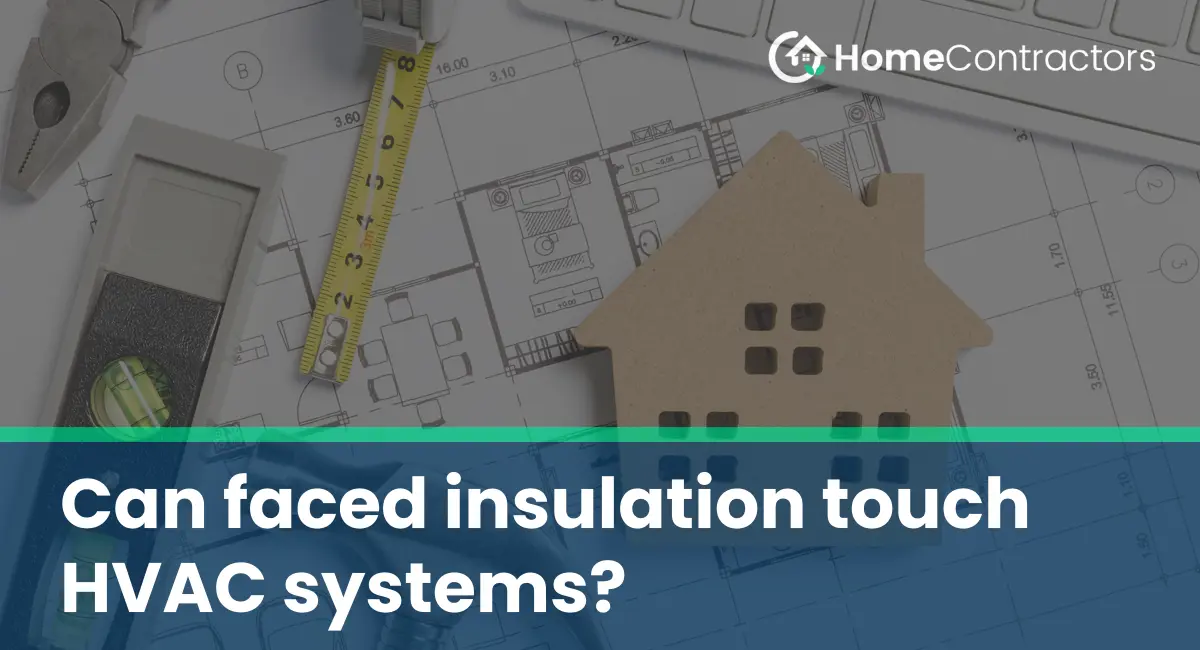When it comes to building or upgrading a home, insulation plays a crucial role in maintaining comfort and energy efficiency. One common type of insulation is faced insulation, which has a vapor barrier or facing material on one side. However, when installing faced insulation, it’s important to consider whether it can come into contact with HVAC (heating, ventilation, and air conditioning) systems. In this article, we will explore this question in detail, considering the potential risks and best practices for installing faced insulation near HVAC systems.
Understanding Faced Insulation
Faced insulation consists of a layer of insulation material, such as fiberglass or mineral wool, with a vapor barrier attached to one side. The vapor barrier serves to prevent moisture from penetrating the insulation and compromising its effectiveness. The facing material can be made of kraft paper, foil, or plastic, depending on the specific type of insulation.
Risks of Faced Insulation Touching HVAC Systems
1. Fire Hazard
One of the major risks associated with faced insulation touching HVAC systems is the potential for a fire hazard. The materials used in the facing of insulation, such as kraft paper or plastic, are combustible. If they come into direct contact with hot HVAC components, such as heating elements or exhaust pipes, they can pose a fire risk. This risk is especially significant in older HVAC systems where components may not be as well insulated or properly spaced.
2. Impaired HVAC Functionality
Faced insulation touching HVAC systems can also impair the functionality of the HVAC system. When insulation is in direct contact with HVAC components, it can restrict airflow, leading to decreased efficiency and increased strain on the system. Restricted airflow can also cause temperature imbalances in the home and decrease the overall effectiveness of heating and cooling.
Best Practices for Installing Faced Insulation Near HVAC Systems
1. Maintain Clearance
To ensure the safety and proper functionality of both faced insulation and HVAC systems, it is crucial to maintain a safe clearance between the two. The clearance distance will depend on the specific manufacturer’s recommendations for the HVAC system and the type of faced insulation being used. Generally, a clearance of 1-2 inches is often recommended to create a buffer zone and limit direct contact.
2. Use Insulation Baffles
Insulation baffles, also known as insulation stops or ventilation baffles, can be installed between the faced insulation and HVAC components to create a barrier and maintain proper ventilation. These baffles are typically made of rigid foam or cardboard and are placed in strategic locations to redirect airflow and prevent direct contact.
3. Consult with Professionals
When dealing with HVAC systems and insulation installation, it is always advisable to consult with professionals who have the expertise and knowledge in both fields. HVAC technicians and insulation contractors can assess the specific requirements of the home and provide guidance on the best practices for installation. They can also ensure that local building codes and regulations are followed to maximize safety and efficiency.
Faced insulation can touch HVAC systems, but it is crucial to follow best practices to ensure safety and maintain optimal efficiency. The risks of faced insulation touching HVAC systems include fire hazards and impaired functionality. To mitigate these risks, maintaining a clearance, using insulation baffles, and seeking professional advice are recommended. By taking these precautions, homeowners can have a well-insulated and safe home without compromising the performance of their HVAC systems.
